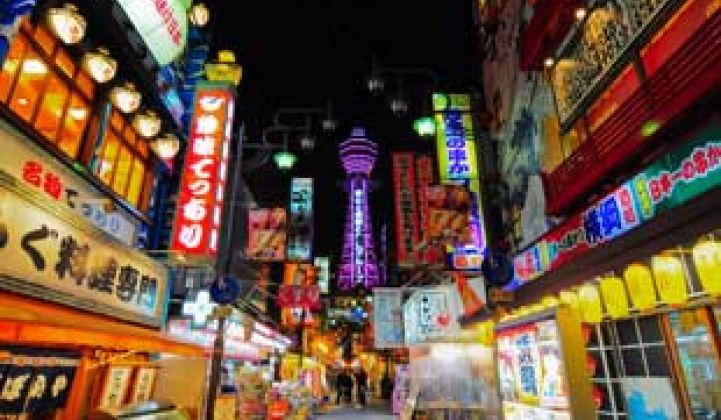EnerNOC (Nasdaq:ENOC) has formed a joint venture with Marubeni Corporation to license its DemandSMART application in Japan.
The new company, EnerNOC Japan, KK was awarded a government-sponsored demand response program with the Tokyo Electric Power Company (TEPCO).
The agreement heightens the competition for demand response market share in Japan, even though it is still early days. Japan’s utilities have turned their attention to demand-side management as the industry continues to contend with generation limits in the wake of the March 2011 Fukushima nuclear disaster.
Earlier this year, Comverge established a research and development facility in Japan and the OpenADR Alliance has also established a toehold to make the OpenADR standard the default communications standard as demand response is built from the ground up in the country.
EnerNOC’s partner Marubeni is one of Japan’s largest trading firms, with annual revenues of more than $50 billion. It owns more than 10 gigawatts of power generation and is one of the largest independent power producers in Japan. EnerNOC Japan, KK is expected to be incorporated by January 2014.
"There is growing national attention in Japan on intelligent buildings and smart grids, and an increased focus by utilities and policymakers on the importance of demand-side management," David Brewster, president of EnerNOC, said in a statement.
The government is already pushing building energy management systems out of the lab and into building stock, according to a report from GTM Research, The Smart Grid in Asia, 2012-2016: Markets, Technologies and Strategies. The market for residential energy management alone could be worth more than $2 billion by 2015, GTM Research found, with the potential for the commercial market being far larger.
For EnerNOC, the focus will be on commercial and industrial load shedding and demand-side management. The project with TEPCO, which is sponsored by the Japanese government's New Energy Promotion Council, will be one of the first deployments of aggregator-based quick-response demand response, according to EnerNOC. The resources will provide both peaking capacity and load-balancing services to TEPCO.
The project will be EnerNOC’s first overseas project using OpenADR dispatch. OpenADR uses an automated signal that can be measured and verified in real time to dispatch demand response. Details on how many megawatts the contract will cover were not disclosed.
Earlier this year, the Japanese OpenADR Alliance hosted workshops; the group already includes many prominent Japanese companies, such as Fuji Electric, Toshiba, Hitachi and Mitsubishi. The adoption of OpenADR is not surprising, as Japan already has a highly automated and advance electrical grid.
EnerNOC is not the only demand response company working with TEPCO. Schneider Electric and Energy Pool, in which Schneider owns a majority stake, partnered with Japan’s Sojitz Corporation recently to set up a 50-megawatt industrial demand response pilot. The project between TEPCO and EnerNOC is scheduled to begin in January.



